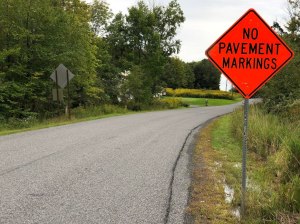German Town Chooses Human Interaction Over Traffic Signals

Driving (carefully) with Dutch "shared space" guru and traffic engineer Hans Monderman.
While battles rage here in New York City over signs and markings and the segregation of the public right-of-way for different types of users, yet another Northern European town is ditching its traffic control devices altogether. Spiegel reports that as of September 12, the German town of Bohmte, will be all "shared space." Rather than being governed by impersonal traffic signals, motorists, pedestrians and cyclists will have to make eye contact to ensure that they don’t crash into each other.
The idea of a town with no road signs conjures up ideas of Italian-style traffic mayhem, with cars whizzing everywhere and nervous pedestrians diving for cover. But for some traffic experts, such chaos is to be embraced — or, as the title of a recent traffic conference in Frankfurt put it, "unsafe is safe."
Now the town of Bohmte in the German state of Lower Saxony is putting its money where its motor mouth is — it’s getting rid of its road signs in a bid to cut accidents.
The work to remove the road signs will begin Wednesday in the town of 13,500 inhabitants. Sidewalks will disappear, as will the asphalt, replaced by cobblestones. Cycle lanes and sidewalks will be distinguished from the road only by color. The town is putting up half of the project’s €2.35-million costs itself, with the EU and other sources of funding supplying the other half.
The idea is based on the European Union-supported "Shared Space" concept of traffic management developed by the Dutch traffic expert Hans Monderman. According to the concept, road users have to negotiate their behavior with each other, rather than have it prescribed by rules — the idea being that people will pay more attention to what other road users are doing and hence cause fewer accidents.

Drachten, Netherlands intersection before Hans Monderman.

Drachten, Netherlands intersection after Hans Monderman.

Drachten drivers and cyclists making eye contact, sharing space and governing themselves.
- Drachten before photo courtesy of Ben Hamilton-Baillie
- Drachten after photo Ben Behnke, Spiegel
- Hans Monderman and Drachten intersection photos, Aaron Naparstek, Drachten, October 2, 2006.
